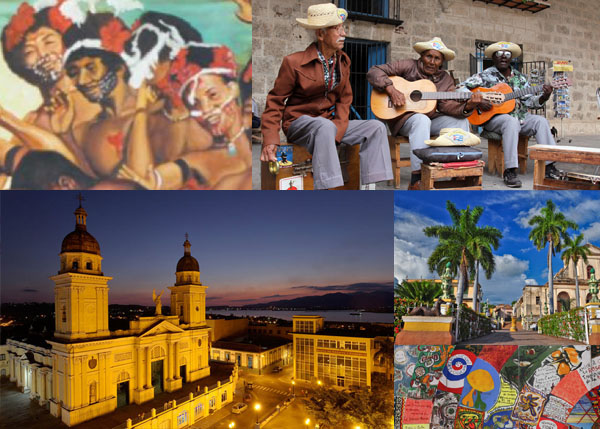1.3 Musical instruments used by Cuban aborigines.

In Areíto, Cuban aborigines used snails, bone flutes, rattles, seashells, the idiophone known as Mayohuacán, the guamo or fotuto, and carved wooden maracas as musical instruments.
The Mayohuacán was the main instrument for the aboriginal people. It was a cylindrical drum, without a membrane, with grooves in the center, which was struck with two sticks. It was sacred to the god Hurricane, a deity greatly feared by the indigenous Cubans. It was played during almost all the aboriginal songs and was made from the trunks of thick trees. It was a sacred instrument, and it is not difficult to assume that the natives sculpted and painted it.
The fotuto, also called guamo, was a wind instrument made from the shell of a sea snail, used by the early inhabitants of Cuba for communication and music. It consists of a large, tube-shaped sea snail with a broken end and blown through, producing loud, hoarse sounds.
The maracas of Cuban aborigines were rattles, mostly made from small, hollowed-out fig trees with attached stick handles, sometimes carved from wood. The maracas used by the behiques for religious rites apparently had a single wooden ball inside—in fact, the behique maraca was carved entirely from a single piece of wood, including the handle. The ones used by the aboriginal musicians were perhaps more similar to modern ones, and they probably used two at a time, like most contemporary percussionists.








